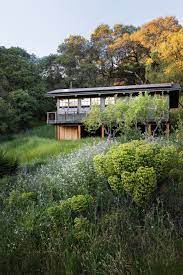In recognition of our BridgingApps team retreat this week, September 27–30.

Retreat: A change of setting that makes time for doing less, experiencing more, and clearing your mind for long-term planning.
For most experienced “retreaters,” the definition would also include unplugging from digital technology. You aren’t really changing your whole setting if you bring along all the email and news-feed connections to your everyday.
Nonetheless, some assistive digital technology is usually required. Especially in the planning and preparation process.
Apps for Planning Your Retreat Agenda
Every retreat needs a goals list. What do you want to get out of your retreat?
- Fresh perspective on your priorities?
- A solid plan toward your long-term goals?
- Spiritual rest and refreshment?
- Bonding with your coworkers/friends/religious congregation?
A digital list or calendar is easier to organize than a handwritten one—especially if this is a group retreat and everyone needs quick access to a master schedule. Try the following apps:
- Structured–Daily Planner is a good option for laying out a retreat day in detail.
- Google Calendar and iOS Calendar both can categorize and share scheduled items.
- The newest version of iOS Reminders gets high ratings from smart-list makers.
- Dropbox, Google Docs, and Trello allow sharing of larger online files (such as signup lists).
- Google Tasks and Todoist are good for organizing to-do lists into tasks and subtasks.
- For those who like more basic lists, iOS Notes and Google Keep are practical, customizable, and sharable.
Apps for Getting to a Retreat Location
And of course, you have to decide where you’re retreating to: an official retreat center, a motel, a public park, or wherever else you can find a slower pace for a few hours or days. Keep in mind that many places require reservations, especially for a group retreat. Check a location’s app or website for information on reservations and on accessibility, facilities, and other essentials.

The following apps help on the journey from home to retreat location:
- Waze is an old pro at calculating the fastest routes in sync with real-time traffic. It also can sync with e-calendars for “time to leave” alerts. And if you want to minimize driver frustration to arrive in the proper “retreat” mood, Waze offers options such as “Avoid toll roads”—plus, it remembers your parking spot so you won’t end your retreat with a new frustration!
- Other popular navigation apps include Google Maps and Apple Maps.
- Many navigation apps can also pinpoint disability-accessible parking, as can specialized apps such as WheelMate. (If you find a reserved space occupied by a vehicle without a “disabled” tag, Parking Mobility is the go-to app for notifying someone who has authority to clear it!)
- The Parkarr app also assists in finding parking spaces, though it relies on individual driver input and doesn’t focus specifically on accessible parking.
Closing Thoughts on Apps and Retreats
- While actually on your retreat, minimize digital time (and the distractions that come with it). Turn off notifications and online access, and make notes/sketches/journal entries in hard copy if possible.
- If you use assistive technology that requires digital access, see about setting your device to temporarily block access to all non-essential functions.
- Be serious about trimming your digital options to the bare essentials: it’s easy to rationalize that you need something when you really don’t. Consider getting a second opinion, plus accountability, for every app you’re tempted to leave on.
- For group retreats, set up a “device parking spot” where everyone leaves their phones for the duration.
- After the retreat proper, use your favorite organizer and calendar apps to help implement new long-term goals. Include another retreat in a few months!


